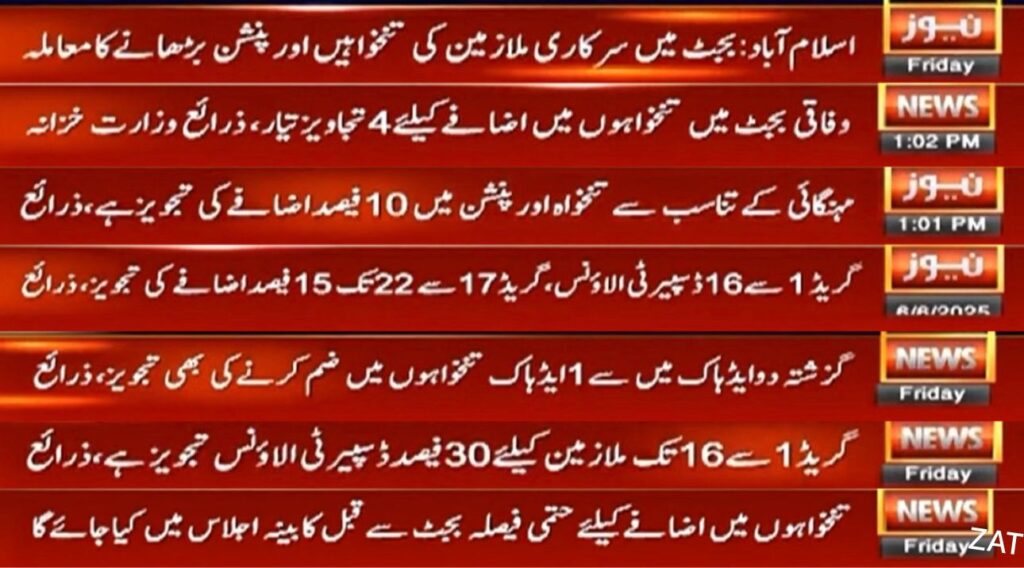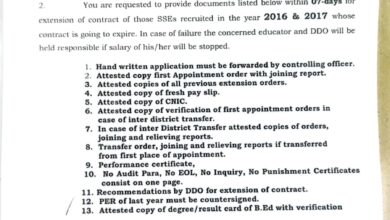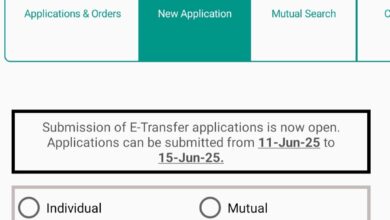Salary Increases

Salary Increases
Salary Increases
Table Of Contents
- 1 Salary Increases
- 2 Outline of the Article
- 2.1 H1: Introduction
- 2.2 H2: Expected Budget Highlights
- 2.3 H2: Proposed Salary Increases
- 2.4 H2: Merger of 2022 Ad-Hoc Allowance
- 2.5 H2: Rationale Behind the Relief Package
- 2.6 H2: Sector-Wise Breakdown of Relief
- 2.7 H2: Employee Reactions and Public Sentiment
- 2.8 H2: Economic Implications
- 2.9 H2: Comparative Analysis
- 2.10 H2: Political and Social Dimensions
- 2.11 H2: Final Budget Approval Process
- 2.12 H1: Conclusion
- 2.13 H1: FAQs
- 3 Introduction
- 4 Expected Budget Highlights
- 5 Proposed Salary Increases
- 6 Merger of 2022 Ad-Hoc Allowance
- 7 Rationale Behind the Relief Package
- 8 Sector-Wise Breakdown of Relief
- 9 Employee Reactions and Public Sentiment
- 10 Economic Implications
- 11 Comparative Analysis
- 12 Political and Social Dimensions
- 13 Final Budget Approval Process
- 14 Conclusion
- 15 FAQs
Outline of the Article
H1: Introduction
- Context of economic pressure and inflation
- Importance of relief for government employees
H2: Expected Budget Highlights
- Summary of proposed relief measures
- Key focus areas in the 2025 federal budget
H2: Proposed Salary Increases
H3: 30% Disparity Allowance for Grade 1-16 Employees
- Who qualifies
- Reasons for disparity allowance
H3: 15% Salary Increase for Grade 17-22 Officers
- Scope and beneficiaries
- Justification for different percentage
H3: 10% Increase in Overall Salaries and Pensions
- Universal benefit proposal
- Potential fiscal impact
H2: Merger of 2022 Ad-Hoc Allowance
H3: Background of 2022 Allowance
- When it was granted and why
H3: Proposed Integration Into Basic Pay
- Benefits for employees
- Long-term financial implications
H2: Rationale Behind the Relief Package
H3: Rising Inflation and Cost of Living
- Impact on daily lives
- Necessity for intervention
H3: Government Strategy to Support Employees
- Balancing fiscal responsibility and social welfare
H2: Sector-Wise Breakdown of Relief
H3: Education and Health Sector Employees
- Expected advantages
H3: Civil Bureaucracy
- Adjustments for senior officers
H2: Employee Reactions and Public Sentiment
H3: Relief and Appreciation
H3: Concerns and Criticisms
H2: Economic Implications
H3: Budget Deficit and Revenue Challenges
H3: Long-Term Sustainability of Pay Raises
H2: Comparative Analysis
H3: Regional Pay Scales vs Federal Proposals
H3: How Pakistan Compares Globally
H2: Political and Social Dimensions
H3: Timing Before Elections
H3: Political Motivation or Necessity?
H2: Final Budget Approval Process
H3: From Proposal to Implementation
H3: Role of Parliament and Finance Ministry
H1: Conclusion
- Summary and future outlook
H1: FAQs
- What is the disparity allowance, and who gets it?
- Why is there a difference in salary increase percentages?
- How does merging the 2022 ad-hoc allowance help?
- When will these changes take effect?
- Will pensions also increase?
Government Employees Set to Receive Salary Increases: Relief Package Expected in Upcoming Budget
Introduction
With inflation spiraling and living costs becoming unmanageable, the government is reportedly preparing a much-needed relief package for its employees. As the new federal budget for fiscal year 2025 nears finalization, expectations are rising among civil servants, particularly those in lower grades. This article explores all the expected proposals—who benefits, how much they stand to gain, and what it means for the economy and public service sector.
Expected Budget Highlights
This year’s budget discussions are centered around relief measures for government employees and pensioners. As per insider sources, the key proposals include:
- A 30% Disparity Allowance for Grade 1 to 16 employees
- A 15% salary hike for Grade 17 to 22 officers
- A 10% increase in both salaries and pensions across the board
- Integration of the 2022 ad-hoc allowance into the basic pay structure
Proposed Salary Increases
30% Disparity Allowance for Grade 1-16 Employees
These employees form the backbone of Pakistan’s administrative system. The disparity allowance is aimed at addressing the unequal salary structure across departments and ensuring some level of parity.
Why 30%?
Because these employees earn the least and are hit hardest by inflation. The proposed hike could significantly improve their quality of life.
15% Salary Increase for Grade 17-22 Officers
For mid to senior-level officers, a 15% raise is on the cards. This group includes section officers, directors, commissioners, and senior civil servants.
Why the lower percentage?
Although they earn more, the government aims to reward them while maintaining a fair budget balance.
10% Increase in Overall Salaries and Pensions
Beyond grade-specific increases, a universal 10% raise is proposed for all government employees and pensioners. This base increase ensures that no one is left behind.
Merger of 2022 Ad-Hoc Allowance
Background of 2022 Allowance
The ad-hoc allowance was introduced in 2022 as a temporary relief measure. Since then, it’s been paid monthly but not counted towards the basic pay.
Proposed Integration Into Basic Pay
Now, the government is considering merging this into the official basic salary, which:
- Enhances pension benefits
- Increases annual increments
- Boosts house rent and other allowances that are calculated on basic pay
This could have long-term benefits for employees, especially those nearing retirement.
Rationale Behind the Relief Package
Rising Inflation and Cost of Living
Let’s face it: the cost of everything—from flour to fuel—has shot through the roof. Government employees, especially in the lower income brackets, are finding it nearly impossible to make ends meet.
Government Strategy to Support Employees
Rather than across-the-board subsidies, targeted salary increases for civil servants offer a sustainable way to inject relief while maintaining some control over public spending.
Sector-Wise Breakdown of Relief
Education and Health Sector Employees
Teachers, nurses, and paramedics are likely to be among the biggest beneficiaries. With crucial roles in public welfare, the increase will help retain talent in government institutions.
Civil Bureaucracy
Senior bureaucrats play a strategic role, and while their increase is moderate, it’s designed to retain competence in policy-making echelons.
Employee Reactions and Public Sentiment
Relief and Appreciation
Many employees have welcomed the move, calling it “long overdue.” For some, it’s a matter of basic dignity and fairness.
Concerns and Criticisms
Critics argue that the relief is not enough to match real inflation. Others worry about the exclusion of contract employees or daily wagers from such benefits.
Economic Implications
Budget Deficit and Revenue Challenges
Pakistan already faces a high fiscal deficit. These salary increases will cost billions. The question is—how will it be funded?
Long-Term Sustainability of Pay Raises
Experts urge structural reforms alongside raises. Without growing revenue, such expenditures could pressure future budgets.
Comparative Analysis
Regional Pay Scales vs Federal Proposals
Some provinces have already implemented higher disparity allowances. The federal package will align more closely with provinces like Punjab and KPK.
How Pakistan Compares Globally
Pakistan’s civil service salaries are still low compared to global standards. The proposed increases aim to bring some parity with regional economies.
Political and Social Dimensions
Timing Before Elections
With general elections not far away, some view the salary increase as a political tactic. But whether it’s timed or not, the need is undeniable.
Political Motivation or Necessity?
It could be both. Political or not, when people are struggling to buy essentials, a raise isn’t just helpful—it’s humane.
Final Budget Approval Process
From Proposal to Implementation
These proposals will be presented in the upcoming budget session. Once approved by the National Assembly, they’ll become official.
Role of Parliament and Finance Ministry
The finance ministry will finalize the figures, and the parliament will debate and approve. Implementation is usually effective from July 1st each year.
Conclusion
The proposed salary and pension increases are more than just numbers on paper—they’re a lifeline for thousands of families struggling in today’s economy. While there are genuine concerns about affordability and long-term sustainability, the relief is a necessary step in turbulent times. If managed wisely, it can ease pressure on civil servants and boost morale across government institutions.
FAQs
1. What is the disparity allowance, and who gets it?
The disparity allowance is a 30% increase proposed for Grade 1-16 employees to reduce income inequality within the civil service.
2. Why is there a difference in salary increase percentages?
Lower-grade employees get 30% due to higher financial vulnerability, while senior officers get 15% to maintain budget balance.
3. How does merging the 2022 ad-hoc allowance help?
It increases the basic pay, which in turn improves pension, house rent, and other related benefits.
4. When will these changes take effect?
If approved, the changes are expected to be implemented from July 1, 2025, the start of the new fiscal year.
5. Will pensions also increase?
Yes, a 10% increase in pensions is part of the proposal to support retired government employees.

Join Us On For Latest Updates For Click Here To Get All Latest Government Jobs And Education News : https://mediaandjobs.com/You Can Join Our What’s app Grouphttps://chat.whatsapp.com/CVwROiD9kKSFwq6pnIdQxiClick Here To Join Our Facebook Page To Get All Latest Government Jobs And Education News : https://www.facebook.com/profile.php?id=100085051735597&mibextid=ZbWKwLDownload And Get Here all Data Of Your Requirement in One File https://heylink.me/EarnWithSSS/



